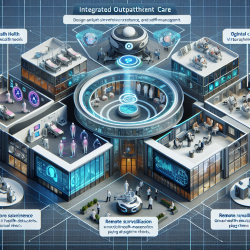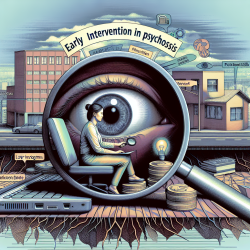Introduction: A New Era in Outpatient Care
The healthcare landscape is rapidly evolving, with a strong emphasis on integrating outpatient care to improve patient outcomes while reducing costs. The research article "Characteristics of Future Models of Integrated Outpatient Care" provides valuable insights into this transformation. This blog post will explore key findings from the study and how practitioners can implement these strategies to enhance their skills and improve patient care.
Key Components of Integrated Outpatient Care
According to the research, the future of outpatient care involves several critical components:
- Self-Management: Empowering patients to manage their health conditions through education and support.
- Electronic Patient-Reported Outcomes (ePROs): Utilizing technology to gather patient data and monitor health status remotely.
- Remote Surveillance: Continuous monitoring of patient health data to provide timely interventions.
- Alerts and Notifications: Systems that notify healthcare providers when intervention is needed.
Implementing Self-Management Strategies
Self-management is a cornerstone of integrated outpatient care. Practitioners can enhance their skills by focusing on patient education and empowerment. This involves teaching patients how to manage their conditions, adhere to medication regimens, and recognize symptoms that require medical attention. By fostering a collaborative relationship with patients, practitioners can improve health outcomes and patient satisfaction.
Leveraging Technology for ePROs
The use of electronic patient-reported outcomes (ePROs) is revolutionizing how healthcare providers gather and utilize patient data. By implementing ePRO systems, practitioners can receive real-time updates on patient health, allowing for more informed decision-making. This approach not only improves patient care but also reduces the need for frequent in-person visits, ultimately lowering healthcare costs.
Enhancing Care with Remote Surveillance
Remote surveillance systems enable healthcare providers to monitor patient health continuously. By utilizing wearable devices and mobile apps, practitioners can track vital signs and symptoms, providing a comprehensive view of patient health. This proactive approach allows for early intervention, preventing complications and improving patient outcomes.
Alerts and Notifications: Staying Ahead of Health Issues
Integrating alert systems into outpatient care models ensures that healthcare providers are promptly informed of any significant changes in patient health. These systems can be customized to trigger notifications based on specific criteria, allowing for timely interventions. By staying ahead of potential health issues, practitioners can provide more effective and efficient care.
Conclusion: Embracing the Future of Outpatient Care
The research on integrated outpatient care models offers a roadmap for practitioners seeking to improve their skills and patient outcomes. By embracing self-management, ePROs, remote surveillance, and alert systems, healthcare providers can deliver high-quality care while minimizing costs. For those interested in further exploring this topic, the original research paper provides a comprehensive overview of these strategies.
To read the original research paper, please follow this link: Characteristics of Future Models of Integrated Outpatient Care.










